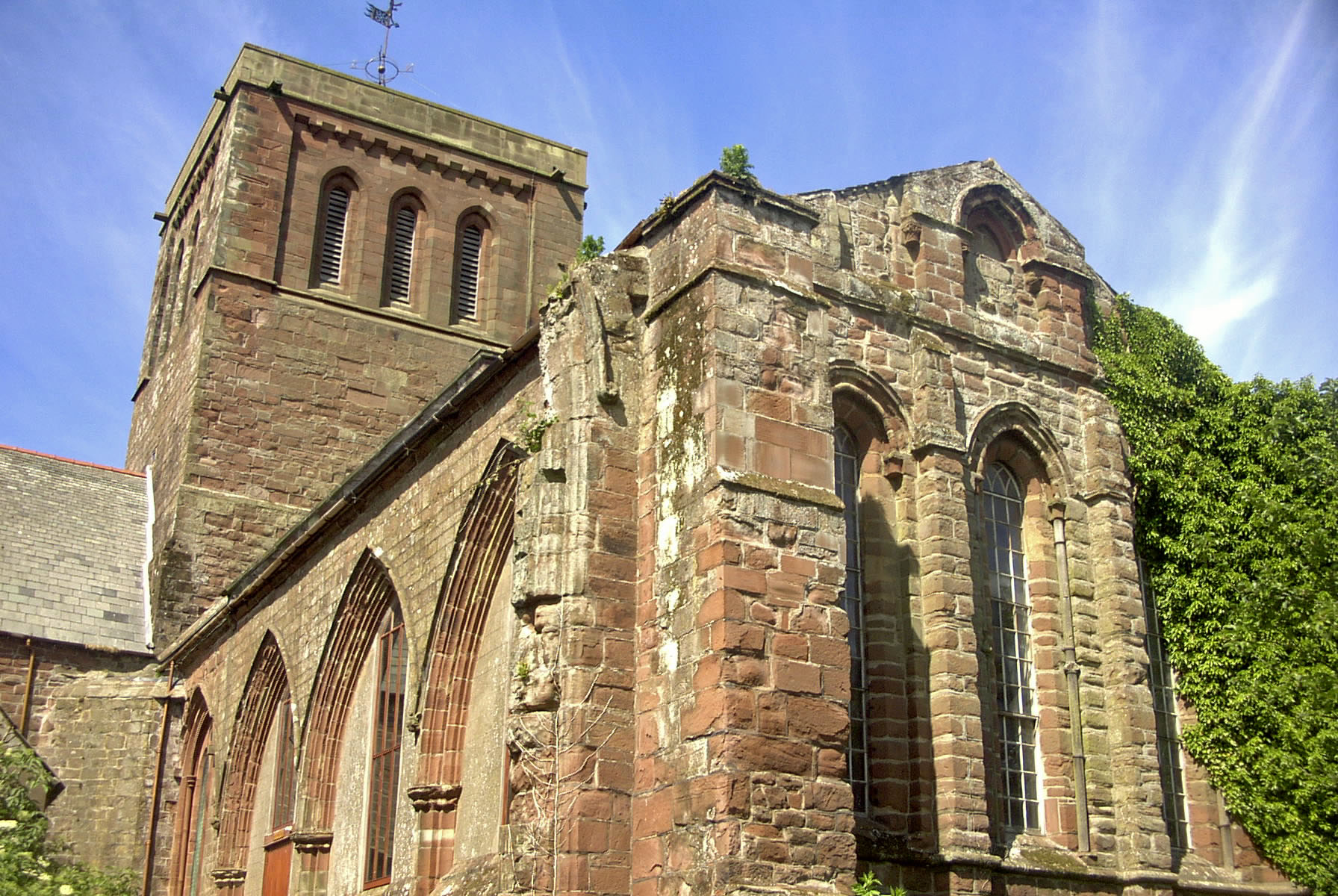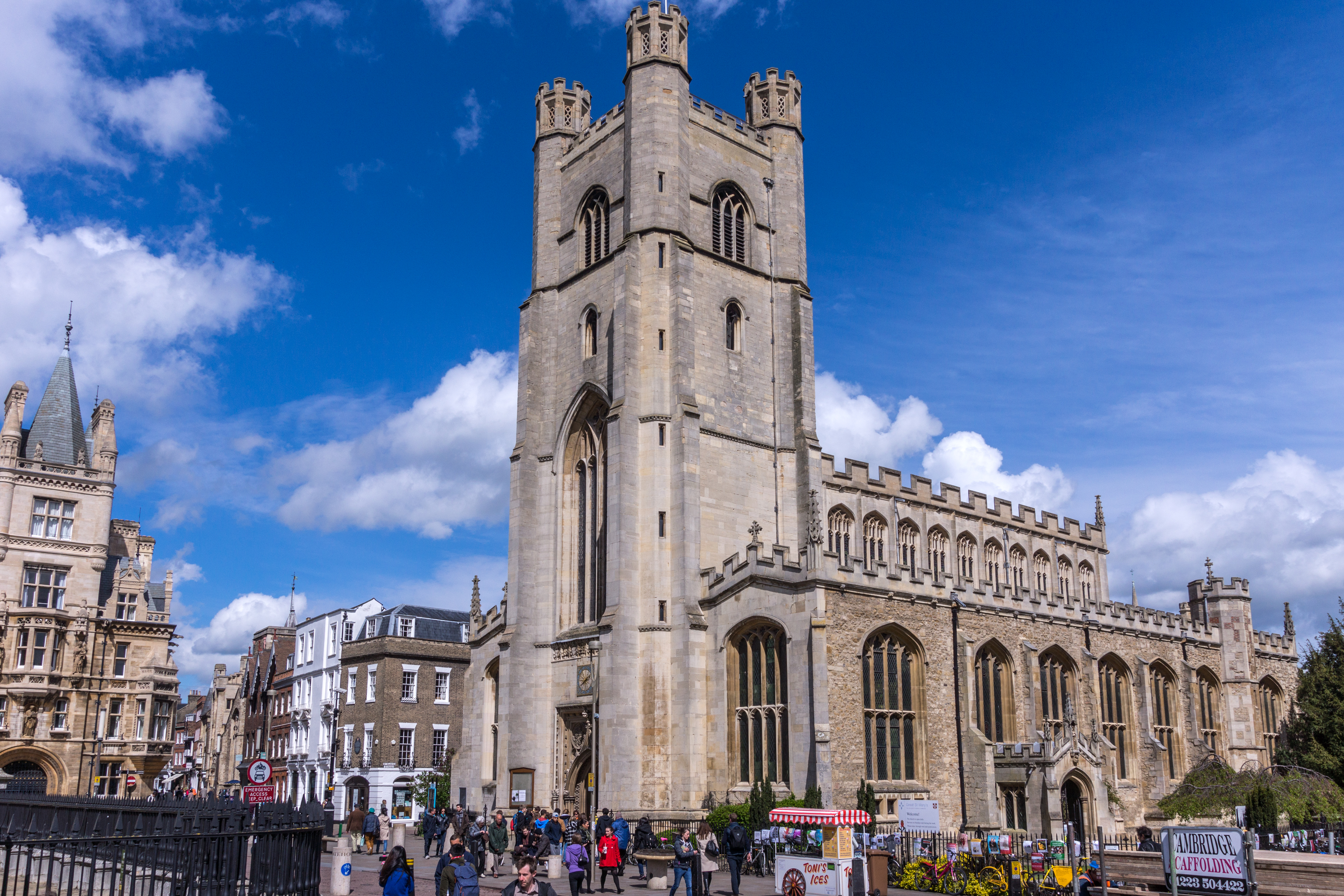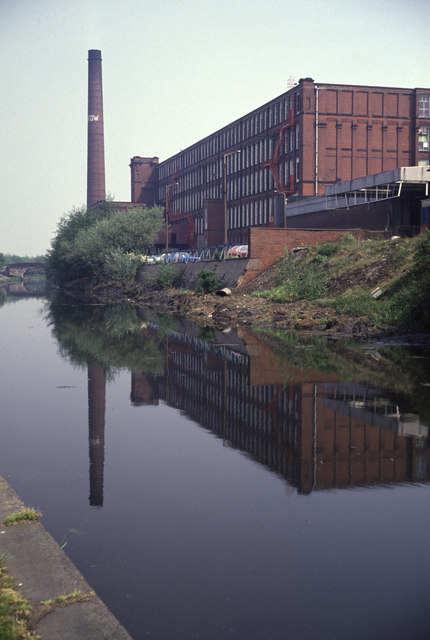|
Richard Parkinson (theologian)
Richard Parkinson (1797–1858) was an English clergyman, known as a canon of Manchester Cathedral, college principal, theologian and antiquarian. Background The son of John Parkinson, by his wife Margaret Blackburne, he was born at Woodgates, Admarsh, near Lancaster, on 17 September 1797. He was educated at the grammar schools of Chipping, Hawkstead, and Sedbergh, and at St John's College, Cambridge, where he matriculated in December 1815. At Sedbergh he was the last pupil who studied mathematics under John Dawson, and at Cambridge his tutor was Thomas Calvert. He graduated B.A. in 1820, proceeding M.A. in 1824, B.D. in 1838, and D.D. on 10 December 1851. Career On leaving Cambridge in 1820, Parkinson was for a short time master of Lea School, near Preston. He edited the ''Preston Sentinel'', a conservative newspaper, during its one year's existence (1821), and contributed to its successor, the ''Preston Pilot''. In 1823 he was ordained, and became curate of St. Michael ... [...More Info...] [...Related Items...] OR: [Wikipedia] [Google] [Baidu] |
The Reverend
The Reverend is an style (manner of address), honorific style most often placed before the names of Christian clergy and Minister of religion, ministers. There are sometimes differences in the way the style is used in different countries and church traditions. ''The Reverend'' is correctly called a ''style'' but is often and in some dictionaries called a title, form of address, or title of respect. The style is also sometimes used by leaders in other religions such as Judaism and Buddhism. The term is an anglicisation of the Latin ''reverendus'', the style originally used in Latin documents in medieval Europe. It is the gerundive or future passive participle of the verb ''revereri'' ("to respect; to revere"), meaning "[one who is] to be revered/must be respected". ''The Reverend'' is therefore equivalent to ''The Honourable'' or ''The Venerable''. It is paired with a modifier or noun for some offices in some religious traditions: Lutheran archbishops, Anglican archbishops, and ... [...More Info...] [...Related Items...] OR: [Wikipedia] [Google] [Baidu] |
Bachelor Of Arts
Bachelor of arts (BA or AB; from the Latin ', ', or ') is a bachelor's degree awarded for an undergraduate program in the arts, or, in some cases, other disciplines. A Bachelor of Arts degree course is generally completed in three or four years, depending on the country and institution. * Degree attainment typically takes four years in Afghanistan, Armenia, Azerbaijan, Bangladesh, Brazil, Brunei, China, Egypt, Ghana, Greece, Georgia, Hong Kong, Indonesia, Iran, Iraq, Ireland, Japan, Kazakhstan, Kenya, Kuwait, Latvia, Lebanon, Lithuania, Mexico, Malaysia, Mongolia, Myanmar, Nepal, Netherlands, Nigeria, Pakistan, the Philippines, Qatar, Russia, Saudi Arabia, Scotland, Serbia, South Korea, Spain, Sri Lanka, Taiwan, Thailand, Turkey, Ukraine, the United States and Zambia. * Degree attainment typically takes three years in Albania, Australia, Bosnia and Herzegovina, the Caribbean, Iceland, India, Israel, Italy, New Zealand, Norway, South Africa, Switzerland, the Canadian province of ... [...More Info...] [...Related Items...] OR: [Wikipedia] [Google] [Baidu] |
Parkinson Grave St Bees
Parkinson may refer to: *Parkinson (surname) * ''Parkinson'' (TV series), British chat show, presented by Sir Michael Parkinson *Parkinson, Queensland, suburb of Brisbane, Australia *The Parkinsons (fl. early 20th century), American father-and-son architects *The Parkinsons (band), a Portuguese punk rock band * The Parkinsons, a broadcasting partnership of Sir Michael Parkinson and his wife Mary See also *Parkinson's (other) *Parkinson's disease, degenerative disorder of the central nervous system *Parkinsonism Parkinsonism is a clinical syndrome characterized by tremor, bradykinesia (slowed movements), rigidity, and postural instability. These are the four motor symptoms found in Parkinson's disease (PD), after which it is named, dementia with Lewy bo ..., also known as Parkinson's syndrome, atypical Parkinson's, or secondary Parkinson's * Parkinson's Law, the adage "Work expands so as to fill the time available for its completion." {{disambiguation ... [...More Info...] [...Related Items...] OR: [Wikipedia] [Google] [Baidu] |
St Bees Theological College
St Bees Theological College, close to the coast of Cumberland, was the first independent theological college to be established for the training of Church of England ordinands. It was founded in 1816 by George Henry Law, Bishop of Chester, in what was during those years the northern extremity of his diocese. For many subsequent years the vicar of St Bees was effectively both the principal of the college and also its proprietor. The college drew students both from England and from Wales. It catered particularly for those prospective ordinands for whom the cost of a traditional university degree course would have been prohibitive. They attended lectures and had their library within the rebuilt chancel of St Bees Priory, whilst living in lodgings throughout the parish.Nicholas Groves, Theological Colleges: their hoods and histories, published by the Burgon Society, 2004, pages 18-19, Over 2,600 clergy are believed to have trained at the college during the course of its history. La ... [...More Info...] [...Related Items...] OR: [Wikipedia] [Google] [Baidu] |
Hulsean Lecturer
The Hulsean Lectures were established from an endowment made by John Hulse to the University of Cambridge in 1790. At present, they consist of a series of four to eight lectures given by a university graduate on some branch of Christian theology. History The lectures were originally to be given by a "learned and ingenious clergyman" from Cambridge, holding the degree of Master of Arts, who was under the age of forty years. The terms for the lectures were quite extensive and particular. The lecturer was As a result of these rather demanding terms and conditions, for some thirty years (1790–1819) no person could be found who would undertake the office of this lectureship. The first to accept was Christopher Benson, who held the post until 1822, at which time he quit, having found the terms and conditions imposed by the lectureship too fatiguing and laborious. For the rest of the decade, only two more lecturers were found, and both in their turn resigned for the same reasons. ... [...More Info...] [...Related Items...] OR: [Wikipedia] [Google] [Baidu] |
Manchester
Manchester () is a city in Greater Manchester, England. It had a population of 552,000 in 2021. It is bordered by the Cheshire Plain to the south, the Pennines to the north and east, and the neighbouring city of Salford to the west. The two cities and the surrounding towns form one of the United Kingdom's most populous conurbations, the Greater Manchester Built-up Area, which has a population of 2.87 million. The history of Manchester began with the civilian settlement associated with the Roman fort ('' castra'') of ''Mamucium'' or ''Mancunium'', established in about AD 79 on a sandstone bluff near the confluence of the rivers Medlock and Irwell. Historically part of Lancashire, areas of Cheshire south of the River Mersey were incorporated into Manchester in the 20th century, including Wythenshawe in 1931. Throughout the Middle Ages Manchester remained a manorial township, but began to expand "at an astonishing rate" around the turn of the 19th century. Manchest ... [...More Info...] [...Related Items...] OR: [Wikipedia] [Google] [Baidu] |
Charles Sumner (bishop)
Charles Richard Sumner (22 November 179015 August 1874) was a Church of England bishop. Life Charles Sumner was a brother of John Bird Sumner, Archbishop of Canterbury. Their father was Robert Sumner and their mother was Hannah Bird, a first cousin of William Wilberforce. Sumner was educated at Eton College and Trinity College, Cambridge and graduated Bachelor of Arts (BA) in 1814 and Cambridge Master of Arts (MA) in 1817. After ordination he ministered for the two winters of 1814–1816 to the English congregation in Geneva. From 1816 to 1821 he was curate of Highclere, Hampshire. In 1820, George IV wished to appoint him as a canon of Windsor, but the prime minister, Robert Jenkinson, 2nd Earl of Liverpool, objected; Sumner received instead a royal chaplaincy and librarianship. Other preferments quickly followed; in 1826 he was consecrated Bishop of Llandaff (at that point the Bishop of Llandaff was also Dean of St Paul's Cathedral, London) and in 1827 Bishop of Winchester. ... [...More Info...] [...Related Items...] OR: [Wikipedia] [Google] [Baidu] |
Rochdale
Rochdale ( ) is a large town in Greater Manchester, England, at the foothills of the South Pennines in the dale on the River Roch, northwest of Oldham and northeast of Manchester. It is the administrative centre of the Metropolitan Borough of Rochdale, which had a population of 211,699 in the 2011 census. Located within the historic boundaries of the county of Lancashire. Rochdale's recorded history begins with an entry in the Domesday Book of 1086 under "Recedham Manor". The ancient parish of Rochdale was a division of the hundred of Salford and one of the largest ecclesiastical parishes in England, comprising several townships. By 1251, Rochdale had become important enough to have been granted a Royal charter. Rochdale flourished into a centre of northern England's woollen trade, and by the early 18th century was described as being "remarkable for many wealthy merchants". Rochdale rose to prominence in the 19th century as a mill town and centre for textile manufacture ... [...More Info...] [...Related Items...] OR: [Wikipedia] [Google] [Baidu] |
Whitworth, Lancashire
Whitworth is a town and civil parish in Rossendale, Lancashire, England, amongst the foothills of the Pennines between Bacup, to the north, and Rochdale, to the south. It had a population of 7,500 at the 2011 Census. Whitworth spans the Whitworth Valley, a area consisting of Healey, Broadley, Whitworth, Facit and Shawforth, linked by the A671 road. Several smaller hamlets are now part of Whitworth, such as Cowm Top, which was removed to make way for Cowm Reservoir. Whitworth is twinned with Kandel, Germany. History Early history The early history of Whitworth is unclear; exact dates are difficult to pin down. At the very earliest period, Whitworth was at the edge of the famed and extensive Forest of Rossendale, which covered and reached a point somewhere near Bacup. Flint arrows, stone hammers and spearheads found in the area point to the existence of Mesolithic man who roamed the bleak open moors. Whitworth has a substantial history, notably the Whitworth Doctors wh ... [...More Info...] [...Related Items...] OR: [Wikipedia] [Google] [Baidu] |
St Bees Priory
St Bees Priory is the parish church of St Bees, Cumbria, England. There is evidence for a pre-Norman religious site, and on this a Benedictine priory was founded by the first Norman Lord of Egremont William Meschin, and was dedicated by Archbishop ThurstanWilson, Rev J, The Registers of St Bees Priory, The Surtees Society 1915. of York, sometime between 1120 and 1135. From sculptural and charter evidence the site was a principal centre of religious influence in the west of the county, and an extensive parish grew up with detached portions covering much of the Western Lakes.See John M. TodThe pre-Conquest Church in St Bees, Cumbria/ref> The Priory was dissolved in 1539, and since then the buildings have been the Anglican church of St Bees parish, and is now a grade I listed building. The Pre-Norman Church There is sculptural and place-name evidence for the existence of a pre-Norman religious site; though no existing buildings from that time. The St Bees place-name is derive ... [...More Info...] [...Related Items...] OR: [Wikipedia] [Google] [Baidu] |
Lancashire
Lancashire ( , ; abbreviated Lancs) is the name of a historic county, ceremonial county, and non-metropolitan county in North West England. The boundaries of these three areas differ significantly. The non-metropolitan county of Lancashire was created by the Local Government Act 1972. It is administered by Lancashire County Council, based in Preston, and twelve district councils. Although Lancaster is still considered the county town, Preston is the administrative centre of the non-metropolitan county. The ceremonial county has the same boundaries except that it also includes Blackpool and Blackburn with Darwen, which are unitary authorities. The historic county of Lancashire is larger and includes the cities of Manchester and Liverpool as well as the Furness and Cartmel peninsulas, but excludes Bowland area of the West Riding of Yorkshire transferred to the non-metropolitan county in 1974 History Before the county During Roman times the area was part of the Bri ... [...More Info...] [...Related Items...] OR: [Wikipedia] [Google] [Baidu] |
Preston, Lancashire
Preston () is a city on the north bank of the River Ribble in Lancashire, England. The city is the administrative centre of the county of Lancashire and the wider City of Preston local government district. Preston and its surrounding district obtained city status in 2002, becoming England's 50th city in the 50th year of Queen Elizabeth II's reign. Preston has a population of 114,300, the City of Preston district 132,000 and the Preston Built-up Area 313,322. The Preston Travel To Work Area, in 2011, had a population of 420,661, compared with 354,000 in the previous census. Preston and its surrounding area have provided evidence of ancient Roman activity, largely in the form of a Roman road that led to a camp at Walton-le-Dale. The Angles established Preston; its name is derived from the Old English meaning "priest's settlement" and in the ''Domesday Book'' is recorded as "Prestune". In the Middle Ages, Preston was a parish and township in the hundred of Amounderness an ... [...More Info...] [...Related Items...] OR: [Wikipedia] [Google] [Baidu] |





